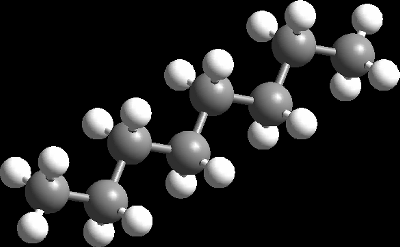

|
|

Polyethylene
monofilament yarns and fibers
from Swicofil

Polyethylene
Introduction Polyethylene
is the most popular plastic in the world. It has a very simple structure, the
simplest of all commercial polymers. A molecule of polyethylene is a long chain
of carbon atoms, with two hydrogen atoms attached to each carbon atom.

Sometimes it is a little more complicated.
Sometimes some of the carbons, instead of having hydrogen attached to them,
will have long chains of polyethylene attached to them. This is called branched, or low-density polyethylene, or LDPE.
When there is no branching, it is called linear polyethylene, or HDPE.
linear polyethylene is much stringer than branched polyethylene, but
branched polyethylene is cheaper and easier to make.
As a result of branching, side groups become
attached to the main chain. Branching leads to a decrease in crystallinity,
lowered density, and impaired stiffness. Branched, low-density polyethylene
has good toughness and pliability. It has outstanding electrical properties,
it is resistant to acids and bases, and has high tear strength. Branched
polyethylene is used for films, drapes, table cloths, squeeze bottles, and
coatings for foil.
Linear, high-density polyethylene has high
crystallinity and high melting temperature. Linear polyethylene has a
greater hardness and tensile strength than branched polyethylene. It is used
in bottles, house wares, toys, pipes, and wire and cable insulation.

Properties
| |
HDPE |
GRET |
|
| Specific gravity |
0,960 |
0,930 |
g/cm2 |
| Factor to calculate tex value |
754
x d2 |
730
x d2 |
- |
| Range of temperatures |
-30
to + 95 |
-30
to + 95 |
°C |
| Melting point |
130 |
130 |
° C |
Tensile
strength
max.poss.: 0,16 – 0,25 mm
0,26 – 0,40 mm |
50
or specified
60
55 |
65
or specified
75
70 |
cN/tex |
Elongation at break
minimum possible
maximum possible |
25
or specified
15
100 |
25
or specified
15
100 |
% |
Shrinkage at 100 °C
minimum possible
maximum possible |
5
or specified
2
15 |
5
or specified
2
15 |
% |
Selfextinguishing (SE)
according to UL 94-V2 |
Our
monofilaments can be supplied as self- extinguishing monofilaments.
However, this effects the standard colour and excludes the possibility
of UV-resistance |
Physical Properties of
Polypropylene
| Moisture regain |
|
| Refractive indexNnD23 |
|
| Thermal conductivity |
|
| Coefficient of linear thermal
expansion |
|
| Heat of fusion |
|
| Specific heat |
|
| Density of melt at 180oC |
|
| Heat of combustion |
|
| Oxygen index |
|
| Decomposition temperature range |
|
| Dielectric constant (0.1 M Hz) |
|
| Dissipation factor (0.1 M Hz) |
|
| Specific volume resistivity |
|
Applications
- Nets and fabrics for agricultural
end uses, for geotextiles
- Any kind of sun breakers, sun blinds, shade nets,
wind walls,
- open packaging, safety nets
- Swimming pool covers
- Ropes, strings
- fishing net
- reinforcements in various coated products such as
plastic, paper etc
Weaving into
fabrics for agro- and geotextiles, filters, shade nets, industrial
textiles, swimming pool covers and furnishing fabrics
Rachel knitting
into protection nets, windwalls, open packaging, safety nets, marking
materials etc.
Reinforcements of
various coated products such as plastic, paper etc.
Braiding into
ropes, fishing net strings, electric fences, rubber band covering etc
|
Grades
- flat yarn
- textured yarn
- high tenacity
- monofilament
- fibers
- tow
- spun yarns
|

|
| Processability |
| Background
information
|
| Our supplier
partner  
Div of Vita Polymers Denmark A/S
|
|


![]()






